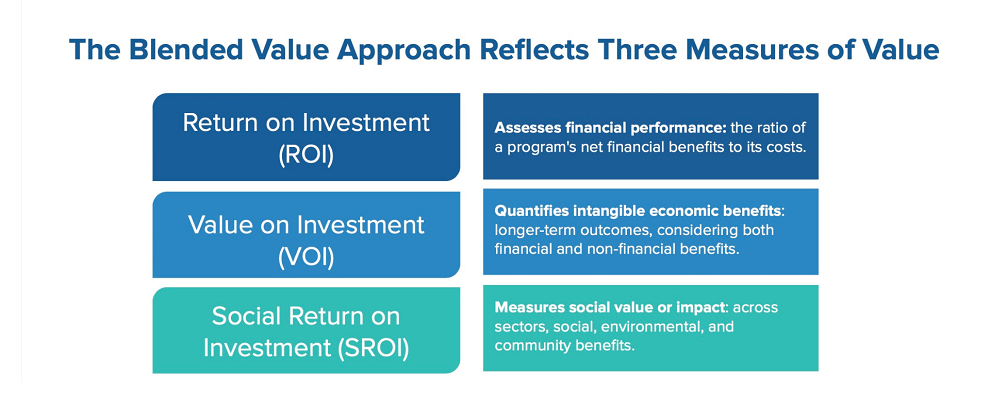Categories:

More Than Money: The Social & Value ROI in Maternal Health
Health care management companies today devote considerable effort to calculating their programs’ short-term savings and return-on-investment (ROI). It makes sense, as payers (self-insured employers, commercial insurers or Medicaid managed care organizations) typically look at programs on a one-year horizon and want to invest their resources into the things that will demonstrate a payback. But shouldn’t we be looking at more than a limiting one-year financial ROI?
Our team at Wildflower Health knows that financial ROI is still a key metric, since it is a major component of our industry-leading value-based care enablement program that combines digital maternal health and personalized care management. Our program demonstrated financial ROI in its first measurement period with our first value-based maternity care client. As we continue our collaboration, we are seeing similar savings and ROI results halfway through our second measurement period. There are also early indicators of savings with our second value-based maternity care client.
Just as important to us are the other benefits our program has brought to moms and their families. Every day our team of Wildflower Health Advocates and Coaches bring new stories about how they have helped moms navigate their pregnancies, from clinical reminders to assisting with health-related social needs.
As part of its mission to partner with and train health care leaders to address upstream drivers of health, the growing company HealthBegins developed an insightful framework with which to consider benefits beyond cost reduction, which they call the Blended Value Approach.

Image reproduced with permission from HealthBegins
In my experience as an actuary, I find that maternal health is a perfect use case to apply HealthBegins’ framework.
- Financial ROI measures the claims cost savings during a pregnancy episode generated by our program, divided by the payer’s cost of that program. Wildflower achieved nearly 3:1 ROI with our first VBC client’s first measurement period, and we saw significant reductions in ER visits, average NICU days and non-delivery inpatient admissions as well. Financial ROI is the most common metric applied to care management programs, but it does not address many of the important non-financial benefits of a program.
- Value on Investment (VOI) reflects the longer term benefits of a program to the mom and family from a healthy pregnancy, and benefits to other stakeholders like the OB provider, delivering health system facility or payer. These benefits might include addressing upstream drivers of health like transportation and child care needs so a mom can get to her OB appointment, or reduced long-term stress to a family by lowering clinical risks to prevent complications such as a Neonatal Intensive Care Unit (NICU) stay. Benefits also extend to the care team by reducing time spent on nonclinical tasks, increasing patient satisfaction, and even goodwill toward the health plan or OB provider for offering a branded care manager that guides the patient.
- Social ROI is the return to society at large from the investment of a healthy pregnancy. It is perhaps more nuanced, but can include things like more trust in the health care system; benefits to a community of a healthy family like improved utilization of social services; or even economic benefits of productivity from a healthy mom’s return to work.
Financial ROI is only the tip of the iceberg when we investigate the benefits of an intervention program. We need to understand the elements of VOI and SROI to fully appreciate the benefits across all stakeholders of a value-based maternity care program like Wildflower’s.
To learn more about HealthBegins' Blended Value Framework, you can register for their online course.
